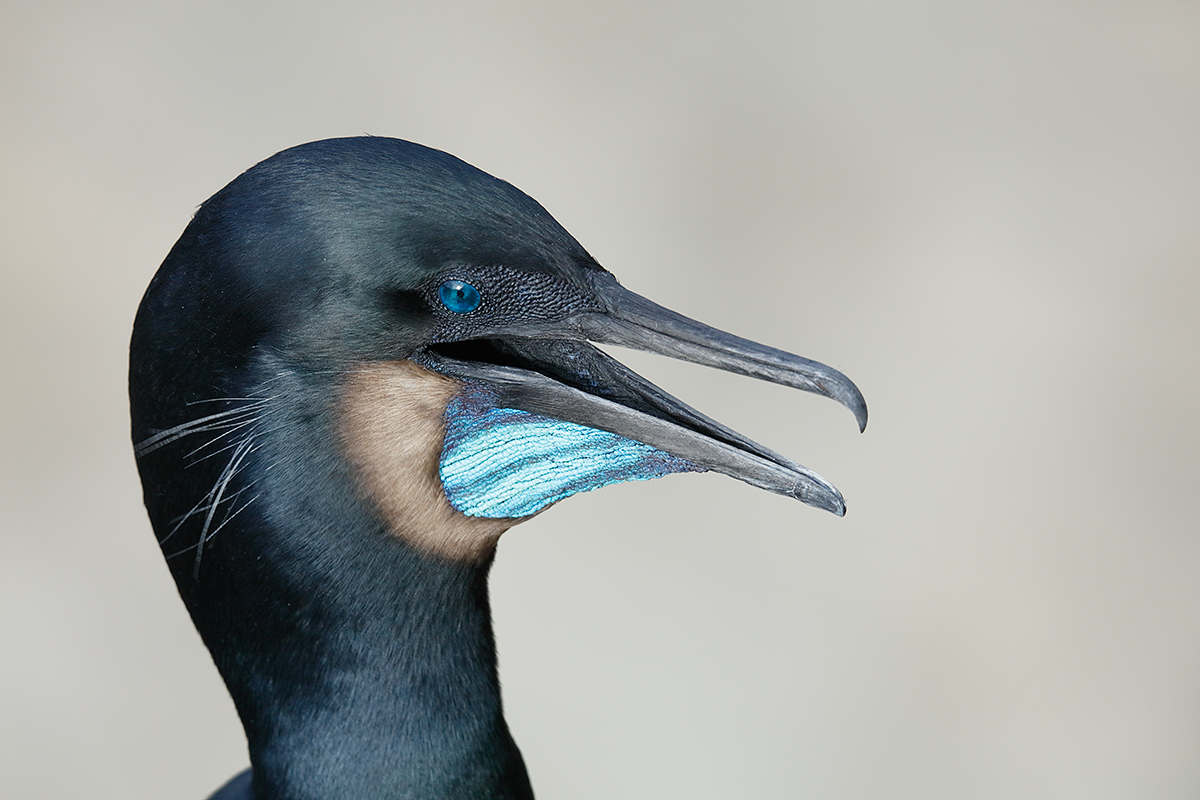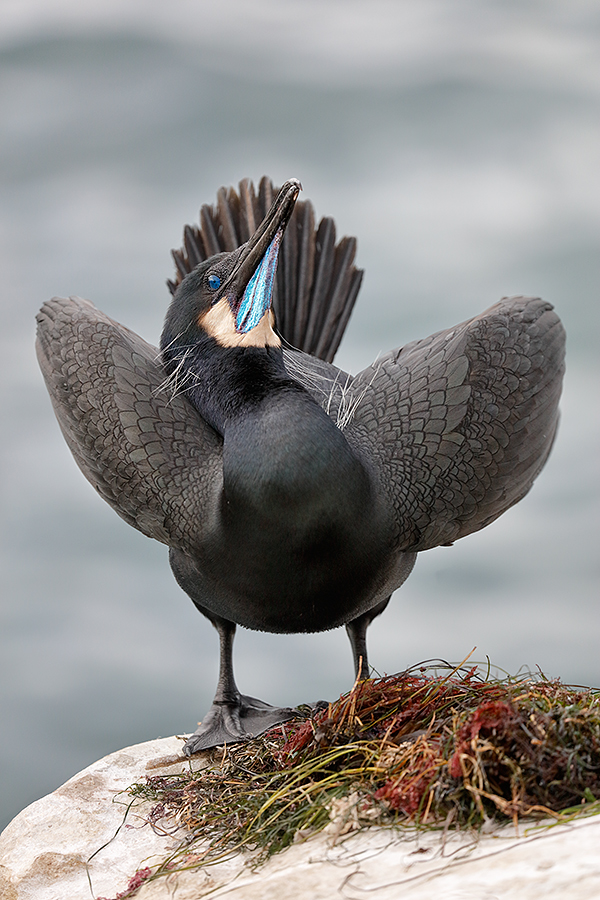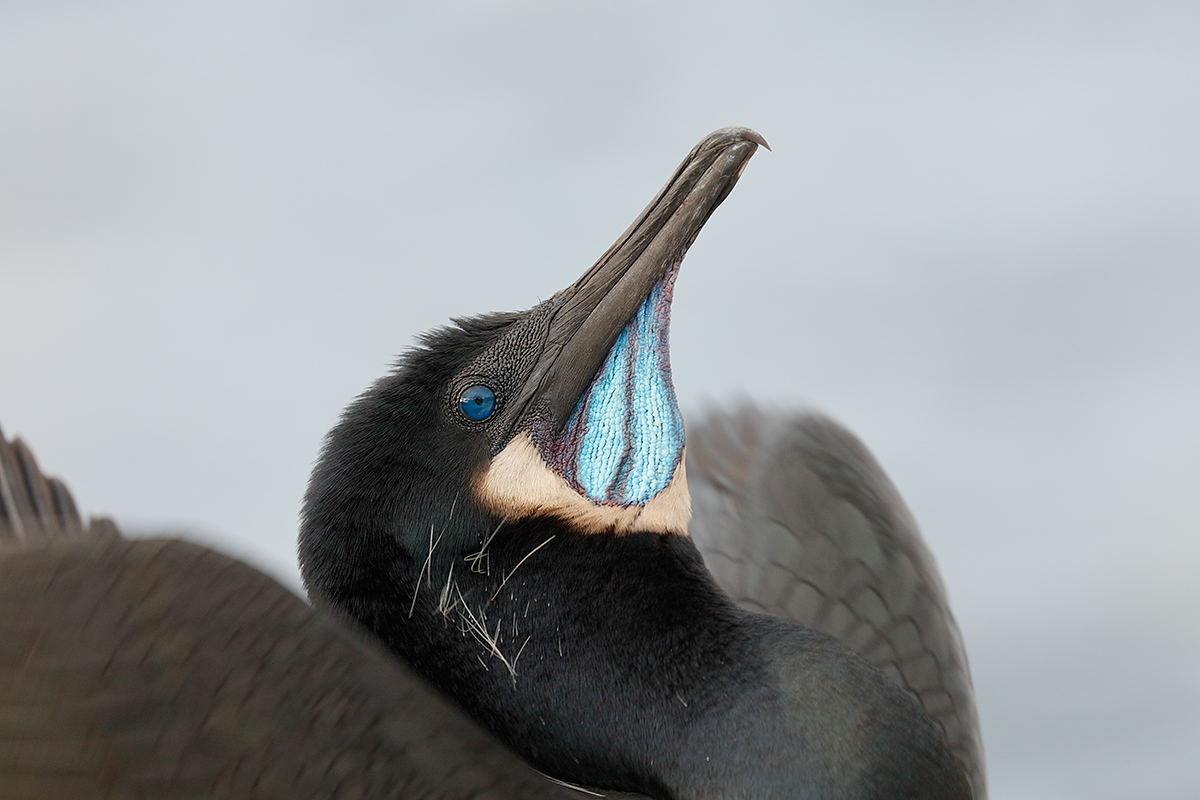What’s Up?
I felt much better on Monday morning with just a bit of left knee pain. Got some unexpected good news on Monday: the time of my check-in for surgery was moved up from 12:30pm to 7:00am with the surgery now scheduled for 9am on Thursday.
IPT Updates
Learn to improve your bird and nature photography with the best instructor on the planet; join a BIRDS AS ART Instructional Photo-Tour. Learn more and see the schedule here.
The Streak
Today’s blog post marks 137 days in a row with a new educational blog post. As always–and folks have been doing a great job recently–please remember to use our B&H links for your major gear purchases. For best results use one of our many product-specific links; after clicking on one of those you can continue shopping with all subsequent purchases invisibly tracked to BAA. Your doing so is always greatly appreciated. Please remember: web orders only. Please remember that if you are shopping for items that we carry in the BAA Online Store (as noted in red at the close of this post below) that we would appreciate your business 🙂
|
This image was created on the afternoon of Friday, March 18, 2016 at La Jolla, CA with the Induro GIT 304L/Mongoose M3.6-mounted Canon EF 500mm f/4L IS II USM lens, the Canon Extender EF 2X III, and the Canon EOS 5DS R. ISO 800: 1/500 sec. at f/10. AWB. Center AF point (by necessity)/AI Servo Expand/Rear Focus AF as framed was active at the moment of exposure. The selected AF point fell on the lower mandible. Click here to see the latest version of the Rear Focus Tutorial. Click on the image to see a larger version. Image #1: Brandt’s Cormorant gular panting on a sunny afternoon |
Gular Panting
Gular panting or gular fluttering is a thermo-regulatory mechanism by which cormorants and (I think…) several other bird families cool down on hot days. It is similar to your dog panting on a hot summer afternoon.
|
This image was created on the same afternoon at La Jolla with the hand held Canon EF 100-400mm f/4.5-5.6L IS II USM lens (at 340mm) with the mega mega pixel Canon EOS 5DS R. ISO 800. Evaluative metering +1/3 stop: 1/400 sec. at f/5.6. Three AF points up and one to the left of the center AF point/AI Servo Expand/Shutter Button AF as framed was active at the moment of exposure (as is always best when hand holding). The selected AF point was on the base of the bird’s beak. Click on the image to see a larger version. Image #2: Brandt’s Cormorant displaying |
Sometimes You Win, Sometimes You Lose…
While my primary reason for visiting San Diego was to explore the possibility of undergoing green light laser prostate surgery–now scheduled for this coming Thursday, March 24, I figured that there would be excellent chances to photograph both Double-crested and Brandt’s Cormorants in their spectacular breeding plumages. There have been only one or two of the former species at their usual location, and they have been looking rather plain. There had been and still are lots of Brandt’s around but again, none in their spectacular breeding plumage… Last Thursday afternoon I discovered several pairs of nesting Brandt’s Cormorants. Each bird sported their amazing azure blue gular sacs and their spiffy white head plumes. And best of all, many of the birds spent a good portion of their time displaying. I returned with Pat Sparkman on Thursday afternoon. We were blessed with mixed clouds and a bit of sun. The photography was so amazingly good and so easy that we both felt a bit guilty. 🙂
|
This image was created on the same afternoon at La Jolla with the hand held Canon EF 100-400mm f/4.5-5.6L IS II USM lens and the Canon Extender EF 1.4X III (at 560mm) with the mega mega pixel Canon EOS 5DS R. ISO 1000. Evaluative metering at zero: 1/125 sec. at f/9. Center AF point (by necessity)/AI Servo Expand/Shutter Button AF as framed was active at the moment of exposure (as is always best when hand holding). The selected AF point was on the gular sac forward of the eye. Click on the image to see a larger version. Image #3: Brandt’s Cormorant displaying tight |
Too Good to Be True?
I have spent the better part of the last four mornings photographing the spectacular breeding displays of Brandt’s Cormorant. I am at the point where I see a gorgeous bird in a clean setting displaying up a storm and I barely give it a second glance. I have been trying for flight images of the incoming birds and for pair interactions.
I have learned a ton: I have never come across so many thieving and unfaithful birds. If a bird walks away from its nest for ten seconds its neighbor steals the seaweed, usually in one fell swoop. I watched one bird, presumably the male, bring in about 15 loads of nesting material and pass it lovingly to his potential mate. Wow, they had a beautiful nest going. When he flew off for number 16, she hopped two nests down to copulate with a third bird, knocking the entire nest into the ocean.
The Strongest Image?
Please leave a comment and let us know which image you feel is the strongest, and why. I am stuck between two of them.
|
San Diego offers a wealth of very attractive natural history subjects. With annual visits spanning more than three decades I have lot of experience there…. |
2017 San Diego 4 1/2-DAY BIRDS AS ART Instructional Photo-Tour (IPT) JAN 11 thru and including the morning session on JAN 15: 4 1/2 days: $1999.
(Limit: 10/openings 8)
Meet and Greet at 7:00pm on the evening before the IPT begins; Tuesday 1/10/17.
Join me in San Diego to photograph the spectacular breeding plumage Brown Pelicans with their fire-engine red and olive green bill pouches; Brandt’s and Double-crested Cormorants; breeding plumage Wood and Ring-necked Duck; other duck species possible including Lesser Scaup, Redhead, and Surf Scoter; a variety of gulls including Western, California, and the gorgeous Heerman’s, all in full breeding plumage; shorebirds including Marbled Godwit, Willet, Sanderling and Black-bellied Plover; many others possible including Least, Western, and Spotted Sandpiper, Whimbrel, Black and Ruddy Turnstone, Semipalmated Plover, and Surfbird; Harbor Seals (depending on the current regulations) and California Sea Lions; and Bird of Paradise flowers. And as you can see by studying the two IPT cards there are some nice bird-scape and landscape opportunities as well.
With gorgeous subjects just sitting there waiting to have their pictures taken, photographing the pelicans on the cliffs is about as easy as nature photography gets. With the winds from the east almost every morning there is usually some excellent flight photography. And the pelicans are almost always doing something interesting: preening, scratching, bill pouch cleaning, or squabbling. And then there are those crazy head throws that are thought to be a form of intra-flock communication.
Did I mention that there are wealth of great birds and natural history subjects in San Diego in winter?
|
Though the pelicans will be the stars of the show on this IPT there will be many other handsome and captivating subjects in wonderful settings. |
The San Diego Details
This IPT will include five 3 1/2 hour morning photo sessions, four 2 1/2 hour afternoon photo sessions, four lunches, and after-lunch image review and Photoshop sessions. To ensure early starts, breakfasts will be your responsibility.
A $599 non-refundable deposit is required to hold your slot for this IPT. You can send a check (made out to “Arthur Morris) to us at BIRDS AS ART, PO Box 7245, Indian Lake Estates, FL, 33855. Or call Jim or Jennifer at the office with a credit card at 863-692-0906. Your balance, payable only by check, will be due on 9/11//2016. If we do not receive your check for the balance on or before the due date we will try to fill your spot from the waiting list. Please print, complete, and sign the form that is linked to here and shoot it to us along with your deposit check. If you register by phone, please print, complete and sign the form as noted above and either mail it to us or e-mail the scan. If you have any questions, please feel free to contact me via e-mail.
Please Remember to use our Affiliate Links 🙂
To show your appreciation for my continuing efforts here, we ask, as always, that you get in the habit of using my B&H affiliate links on the right side of the blog for all of your photo and electronics purchases. Please check the availability of all photographic accessories in the BIRDS AS ART Online Store, especially the Mongoose M3.6 tripod heads, Gitzo tripods, Wimberley heads and plates, LensCoats and accessories, and the like. We sell only what I have used, have tested, and can depend on. We will not sell you junk. We know what you need to make creating great images easy and fun. And we are always glad to answer your gear questions via e-mail. I just learned that my account was suspended during my absence; it should be up and running by Monday at the latest.
I would of course appreciate your using our B&H affiliate links for all of your major gear, video, and electronic purchases. For the photographic stuff mentioned in the paragraph above we, meaning BAA, would of course greatly appreciate your business. Here is a huge thank you to the many who have been using our links on a regular basis and visiting the BAA Online store as well.
Be sure to like and follow BAA on Facebook by clicking on the logo link upper right. Tanks a stack!
Typos
In all blog posts and Bulletins, feel free to e-mail or to leave a comment regarding any typos or errors. Just be right 🙂



















Number 2 tells me more of the whole story. Great shot.
Best of luck tomorrow. You’ll be in our thoughts.
All the best.
My choice is #3 … Love the clean background around the head, nothing to distract or mislead my eye, great head angle/toss – and just a bit of meotion in the wings. The colors and fine details are superb. All 3 are simply wonderful but #3 gets my vote.
Number 2 by far is the stronger image. Wish it was mine.
#2 is my definite favorite. Love the detail in the wing feathers besides the beautiful azure color of gular sac and eye and spread of the tail. Nice to see the whole display. Might prefer a horizontal with more space to the right, but I don’t know what distracting things might have been to the right. Just seems cropped on the sides a bit tightly. But, love the image! A beauty!
Absolutely love #2. Great capture. I am new to your blog and really enjoy it. Good luck on Thursday
Thanks and thanks! a
Artie, my vote is #2. The display position of the body, wings, head, and the feather detail in the wings is beautifully composed and super sharp.
Arnie a fellow photographer has the Canon 5dS R. By his standards hand-holding this body with a super telephoto lens is resulting in sub-par images due to the least amount of movement when actuating the shutter. I comprehend the physics of his conclusion. What can you say about this? Is it his technique? I’m not sure which lens he’s using but I’m sure it’s an IS version.
Thanks,
Allen
With the greater pixel pitch of the 5DS R (and the 7D II as well) you must keep the rig perfectly still either with superb hand holding skills or by using a tripod. Patrick Sparkman makes super-sharp images with the hand held 600 II/2X III/5DS R combo but he is the exception to the rule… a
Artie: I think you mean pixel density rather than pixel pitch. All three images are stunning, #1 the most stunning for me. Good luck Thursday. 7am is much better.
It’s #2 for me. Beautiful cyan on the bird, beautiful red in the nest material–opposite colors. Sharp dark lines outlining wing feathers (wow) make a beautiful abstract. The nest, the whole bird in display posture showing action, and the ocean behind all tell a story that this is an ocean bird in courtship. Beautiful composition.
Would also vote for #2. Pose, wing detail, environment All beautiful. Re TGTBT: Another effect of birds having too much human contact ? 🙂
Thanks Richard. Not at all. The birds are on protected ledges and have a strong instinct to stay on the nest. a
All 3 are awesome but I love the composition and display in #2. It provides a bit of environment and action without losing the bird’s color and details. Congrats on capturing this beautiful image.
Tough choice. I’m torn between #1 and #3. I do love #2, especially with the details of the wings. But my vote would go for #3. I like his head straight back. Plus, by being at 1/125 you got a little bit of blur on the wings. The wing blur is what edges it out for me over #1.
Doug